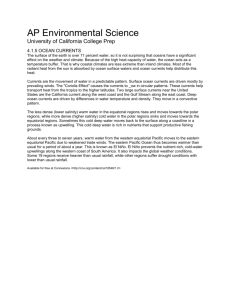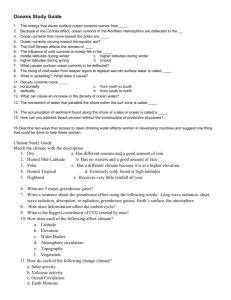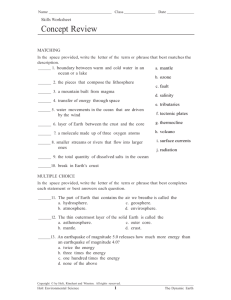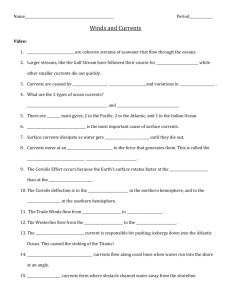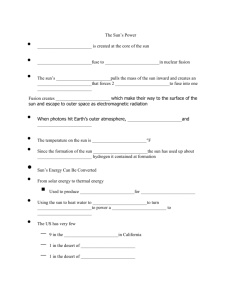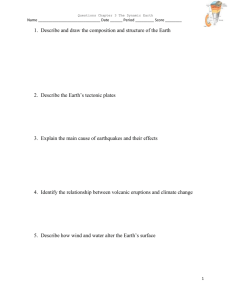EW&A 1
advertisement
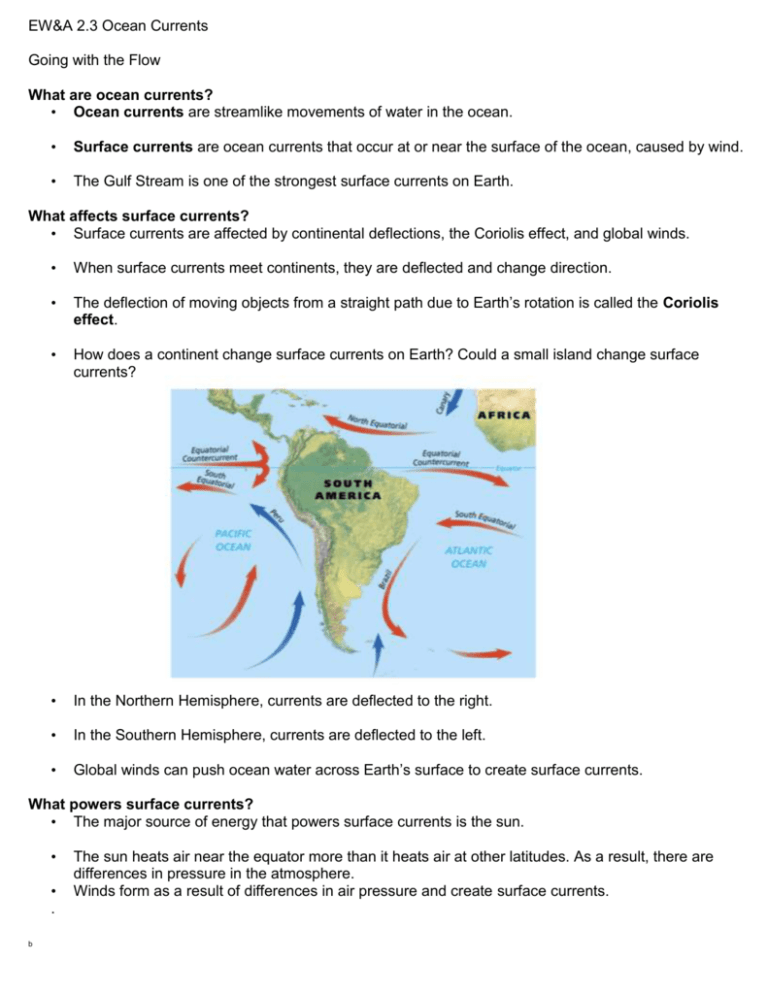
EW&A 2.3 Ocean Currents Going with the Flow What are ocean currents? • Ocean currents are streamlike movements of water in the ocean. • Surface currents are ocean currents that occur at or near the surface of the ocean, caused by wind. • The Gulf Stream is one of the strongest surface currents on Earth. What affects surface currents? • Surface currents are affected by continental deflections, the Coriolis effect, and global winds. • When surface currents meet continents, they are deflected and change direction. • The deflection of moving objects from a straight path due to Earth’s rotation is called the Coriolis effect. • How does a continent change surface currents on Earth? Could a small island change surface currents? • In the Northern Hemisphere, currents are deflected to the right. • In the Southern Hemisphere, currents are deflected to the left. • Global winds can push ocean water across Earth’s surface to create surface currents. What powers surface currents? • The major source of energy that powers surface currents is the sun. • • . b The sun heats air near the equator more than it heats air at other latitudes. As a result, there are differences in pressure in the atmosphere. Winds form as a result of differences in air pressure and create surface currents. Current Events How do deep currents form? • Deep currents are movements of ocean water far below the surface. They are caused by differences in water density. • Density is the amount of matter in a given space or volume. • • Salinity and temperature cause differing ocean water densities. Salinity is a measure of the amount of dissolved salts or solids in a liquid. Higher salinity makes water more dense. • Cold water is denser than warm water. • Dense water sinks and can form deep water currents that flow along the ocean floor or on another layer of denser water. What are convection currents? • Convection currents in the ocean are the movement of water that results from density differences. • Convection currents can be vertical, circular, or cyclical. How do convection currents transfer energy? • Water at the ocean’s surface absorbs energy from the sun, and surface currents carry this energy to colder regions. • As warm water reaches a colder region, it cools, becomes denser, and sinks. • As warm surface water moves away, cold water rises to the surface. The cold water absorbs the sun’s energy, and the cycle continues. That’s Swell What is upwelling? • Upwelling is the process by which winds blow warm water away from a shore, allowing cool, nutrientrich water to rise to the surface. • Upwelling supplies the nutrients that support the growth of phytoplankton and zooplankton. • These tiny organisms are food for larger organisms, such as fish and seabirds. What would happen to ocean life if upwelling did not occur? b Hitching a Ride! • Ocean currents can transport various living organisms to different parts of the world. • Turtles, coconuts, and phytoplankton all ride the ocean’s surface currents. Traveling the World What do ocean currents transport? • Convection currents in the ocean transport energy in the form of heat. • Ocean currents can release energy into the atmosphere, making currents an important influence on climate. • Ocean water also transports dissolved solids, including nutrients, and dissolved gases that support the growth of many marine organisms. Trace pathways on the map to show how nutrients can be transported by ocean currents. b

